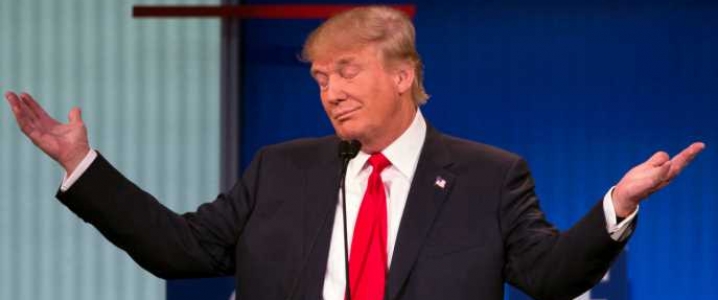Courtesy of Leonard Hyman & William Tilles at OilPrice.com

On September 22, Donald Trump reaffirmed his intent to revive the American coal industry – without many details on how to do it. What influences the price and demand for coal? Can Donald Trump influence the forces behind these market drivers?
We nominate these four factors as the most important drivers of coal prices: production and demand for steel, because the coal industry sells and exports metallurgical coal used in steel production; demand for electricity, insofar as much electricity is still generated from coal; Chinese government interference in the steel and metallurgical coal markets, because China is the world's largest steel producer and most of the companies there are state owned; and, lastly, the price of natural gas because coal competes directly with natural gas in the electric generation market. Of course a fifth factor may emerge: Presidential Candidate Donald Trump’s plan (so far unspecified) to make coal king again.
Let’s examine these factors most of which are not within the control of the U.S. President. From 2007 (before the market crash) to the present, steel production in the U.S. and the Rest of the World (outside China) has declined and Chinese production may be topping out as well. The coal industry can’t improve metallurgical coal sales up without a steel industry revival. (See Figure 1.)
Figure 1. Production of Crude Steel (millions of metric tons)

The electricity market has a similar "topping" look to it (and is far more important because electric generators buy over 90% of all U.S. coal production). We see static sales in the U.S. and declining growth elsewhere. (See Figure 2.) Even if renewables, especially wind, were not crowding out coal from the power generation market, sales to the electricity industry would show minimal growth at best. The real problem? Coal can no longer compete with natural gas on a price basis as an electricity generating fuel.
Figure 2. Electricity Generation (TWH)

But the price of fuel is only part of the problem. The costs to build new coal-fired power plants is higher as well. Overall power costs for a new gas fired station are roughly 20 percent lower than from a coal fired power plant. (See Figure 3.)
Figure 3. Delivered Price of Fuels to Electric Generators and Gas Price Adjusted for Superior Efficiency of Gas fired plants ($/MM BTU)

Note: Adjusted gas price takes into account the relative fuel efficiency of gas vs coal stations.
President Trump claims he will ease environmental restrictions on coal by appointing sympathetic administrators to the EPA. At the same time he would also lift restrictions on natural gas exploration and production. For coal is a problem. It would lead to even more price competition by lowering natural gas production and development costs thereby making gas even more competitive as a boiler fuel.
It's probably safe to assume that Mr. Trump takes a dim view of carbon limits such as those recently agreed to by world leaders in Paris. But prospective power plant builders also have to consider that whoever occupies the Oval Office post-Trump may entertain more conventional views on global warming and climate change. Thus it is unlikely we will see a rush to construct coal fired power plants with an expected forty or sixty year life.
President Trump, however, could also attempt to slow the advance of renewables. At the federal level, reducing or eliminating relatively attractive tax credits is an obvious first step. While this might slow the decline of coal sales, it would not protect the coal industry from innovative, low cost competitors (both natural gas and renewables).
At the end of the day, natural gas is cheaper than coal. It also emits roughly half as much CO2 as coal per kwh when burned to produce electricity. In a nutshell, that’s a large part of why utility CO2 emissions are declining.
Much attention has been focused on states that produce coal. It may also help to ask, what areas of our country depend most heavily on coal? Answer: rural ones. Coal is the way rural America produces its electricity. The contractual relationship between the rural co-ops and generation-owning G&Ts (almost exclusively coal fired) is likely to come under scrutiny. This is a stealth issue for Supreme Court watchers.
On the economic battlefield, coal is losing and natural gas is winning. Mr. Trump, should he win in November, could certainly help the coal industry. He could work to level the environmental playing field thereby slowing the rate of coal’s decline. But there's not much any U.S. President can do about trends in worldwide steel production or the American public’s desire to consume energy more efficiently, as demonstrated in flat electricity sales. Maybe he really has a plan. We just don’t see it.



